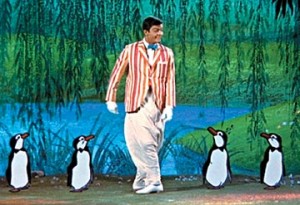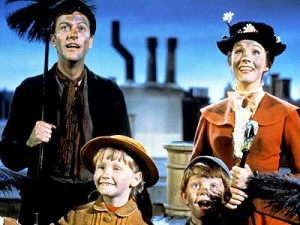Diary of a Wimpy Kid
Posted on August 4, 2010 at 6:00 am
“Middle school may be the dumbest idea ever,” says Greg Heffley (Zachary Gordon), and I think he speaks for all of us. If you ask most adults whether they would rather be audited by the IRS or go back through middle school again, they’d have a hard time making a choice. No one understands that better than Jeff Kinney, whose wildly popular series of Wimpy kid books are so true to the middle school experience — and so funny about it as well — that more than 11 million copies have been sold.
The reason that middle school is so agonizing is that it is the time when we first realize that we would really like to be cool at the same time we are struck with the horrifying realization that we have no idea how to get there. It is a time of agonizing self-examination, growing uncertainty about everything we thought we knew, diminishing willingness to rely on our parents, and the terrifying conviction that everyone else seems to have it figured out. It is the time of the great hormone divide, where boys who look like they are 10 share a classroom — and a locker room — with kids who look like they could be in college. It is a time when we rethink everything we thought we knew about who we are and what we want from our friends. So much suddenly seems GROSS and EMBARRASSING. Everything suddenly seems so disgusting we end up projecting all of those feelings onto some weird object like a piece of moldy cheese, which then assumes urban legendary status with the power to cooty-fy anyone who touches it. And in the middle of this we are also expected to live through algebra and PE.
Greg thinks he understands what it takes to succeed in middle school, despite the endless list of “don’ts” he gets from his older brother Rodrick (an enjoyably predatory Devon Bostick). “You’ll be dead or homeschooled by the end of the year,” he concludes. Greg is sure that his elementary school best friend Rowley (Robert Capron) is clueless — Rowley still says things like “You want to come over and play?” instead of “You want to hang out?” and does a dance number WITH HIS MOM at a school party. But this wouldn’t be a movie — and it wouldn’t be middle school — unless Greg had some important lessons to learn about coolness, friendship, and just how much he still needs to learn.
The movie captures the tone of the books, even including animated segments featuring the book’s stick figures. Gordon has an engaging screen presence that keeps us on his side. He and Capron seem like real kids, centering even the heightened situations and emotions by reminding us that in middle school, that’s how it really feels.



